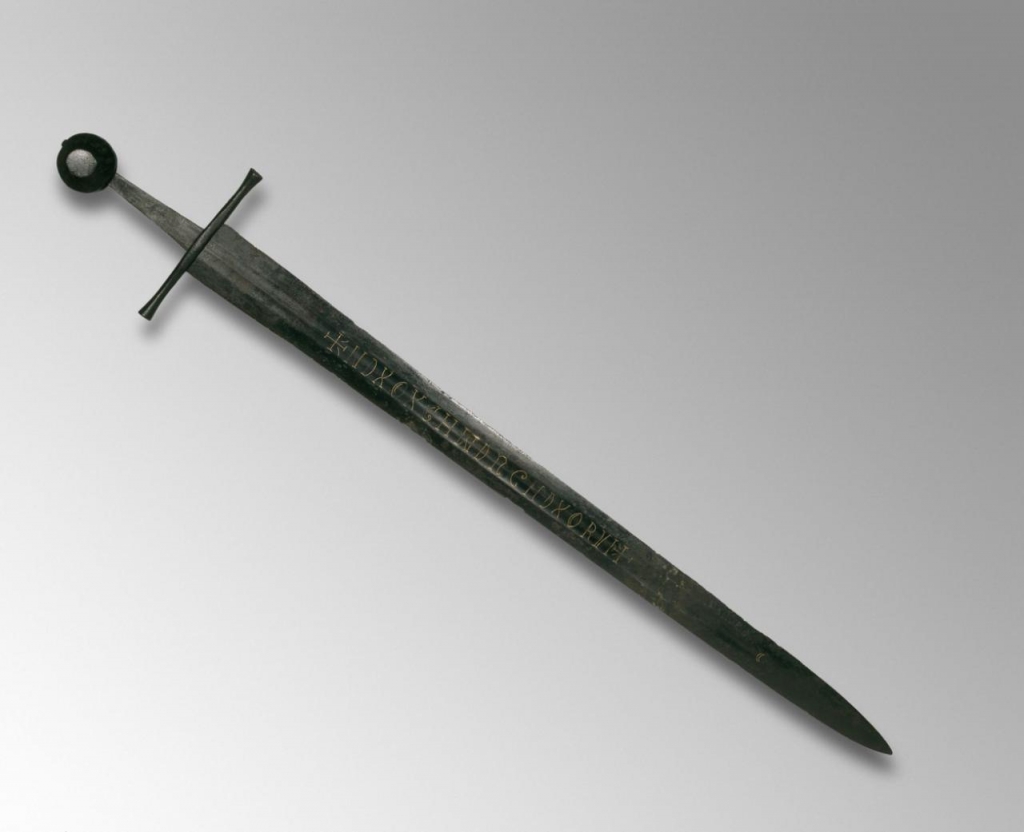British Library needs your help deciphering inscription on 800-year-old sword
The sword will be available for the public to see at the British Library in central until the 1st of September 2015.
“The sword is part of the ceremony of Knighthood, and the cross-shaped hilt of such swords, used by knights, acknowledge the Christian duties a knight must fulfill, defending the church”, the museum’s description of the sword reads.
According to a blog by curator Julian Harrison the sword was presented to the Royal Archaeological Institute by the registrar to the Bishop of Lincoln.
There is an inscription on the the sword that so far scholars and experts have been unable to decipher.
The sword, on loan from the British Museum, was found in River Witham, Lincolnshire in the 19th century and comes with an as of yet undecipherable inscription that the British Library are asking the public to have a go at solving. The sword is a particularly fine double-edged steel weapon of English design. The 18-letter message reads: NDXOXCHWDRGHDXORVI.
“It has been speculated that this is a religious invocation, since the language is unknown”.
The blog’s comment section lit up with suggested translations, wild guesses, and helpful links to academic research on medieval sword inscriptions. For example, “ND” may mean “nostrum dominus” meaning “our Lord”, while the letter “X” may be for Christ. However, Harrison thinks the most probable idea is that the inscription is in medieval Welsh, and could be roughly translated to “No covering shall be over me”, meaning that the owner of the sword must be ready for battle at all times.
Researchers have updated the blog post saying it is their belief the language may be Latin and noting that several similar swords with similar mysterious inscriptions have been found in a number of other European countries.
The sword is now on display in London’s British Library, which is hosting an exhibition called ‘Magna Carta: Liberty, Law, Legacy’. The old text is open at a page that depicts the French invasion of Normandy in 1203 with soldiers using swords that closely resemble the sword with the undeciphered inscription.








